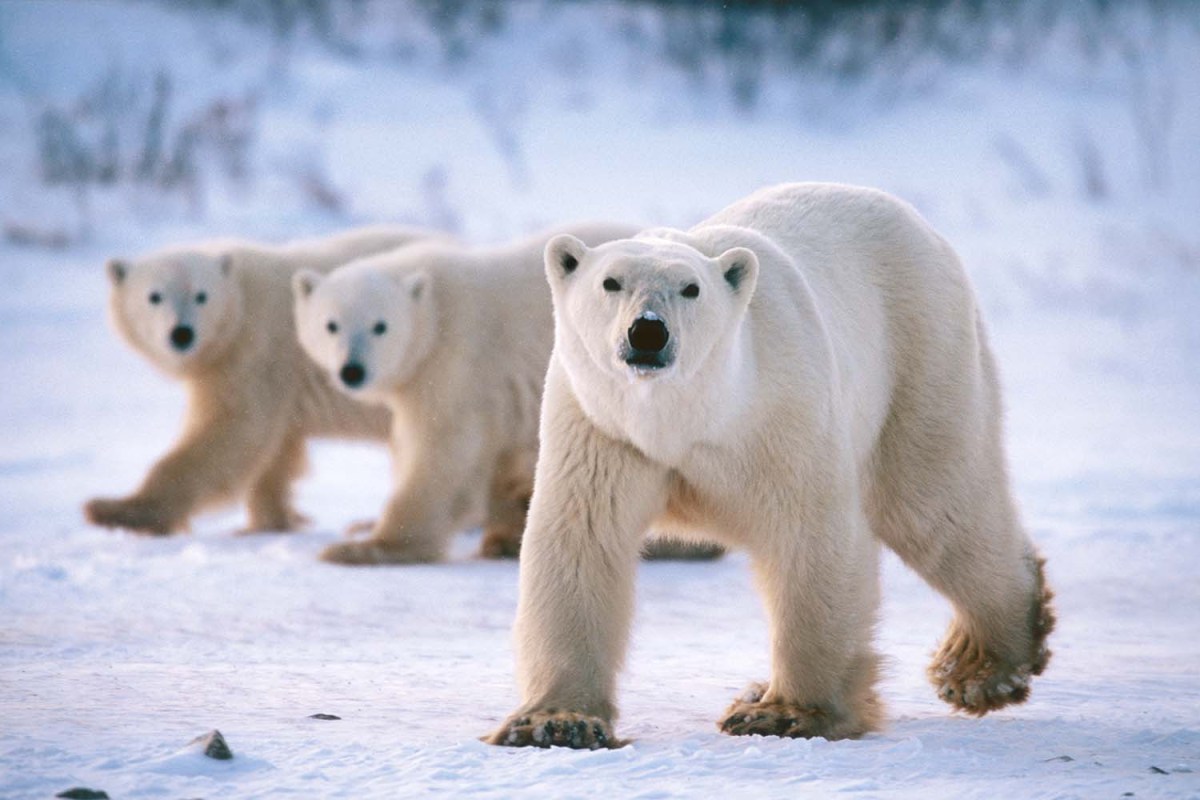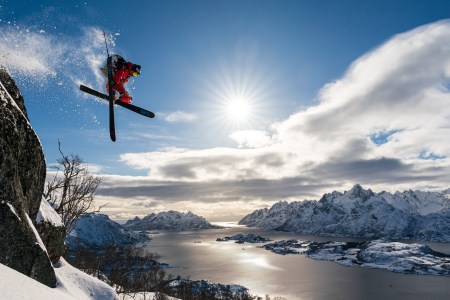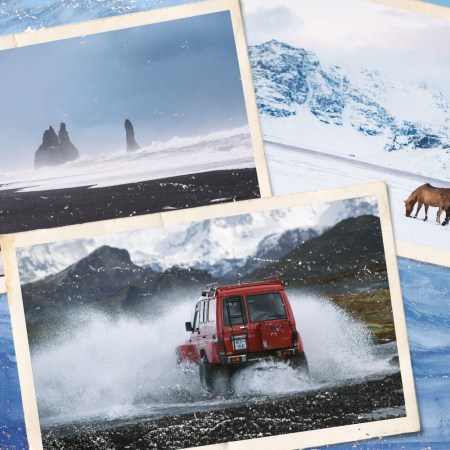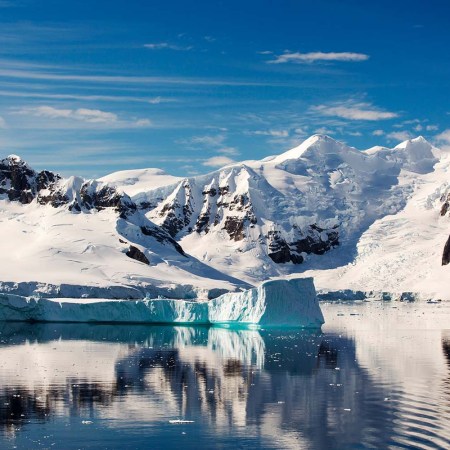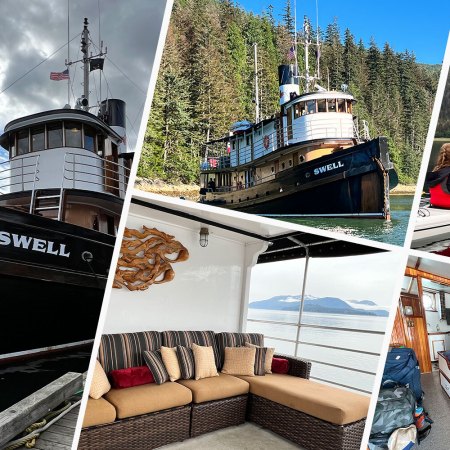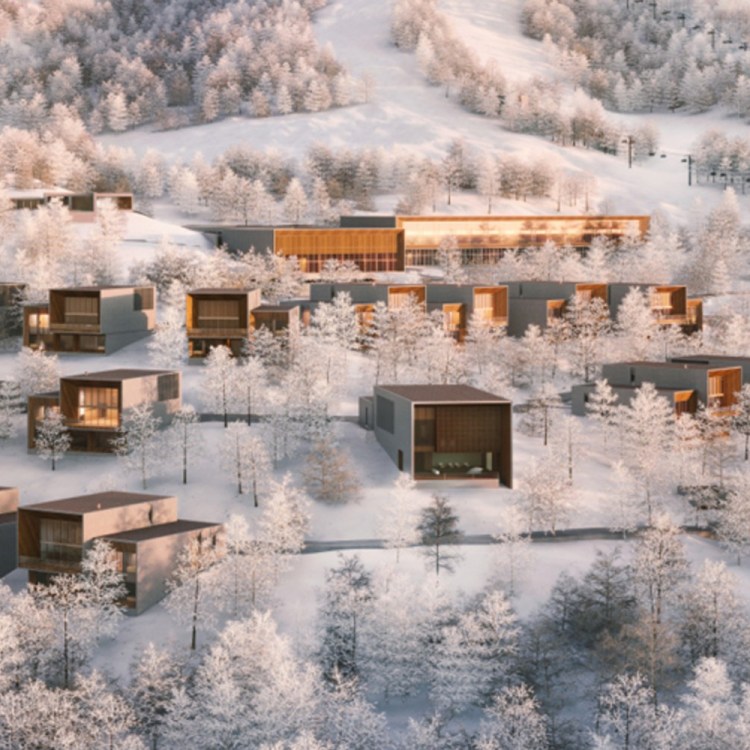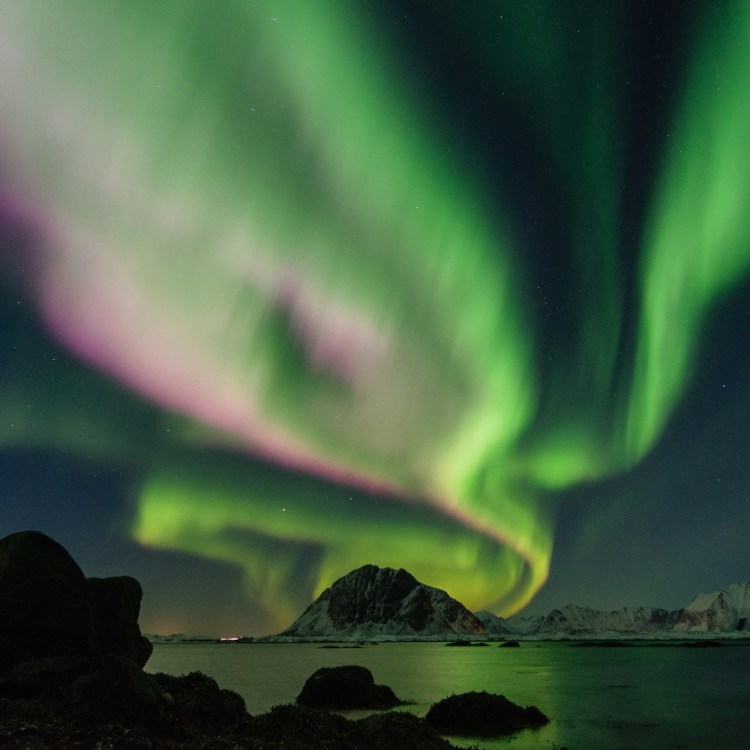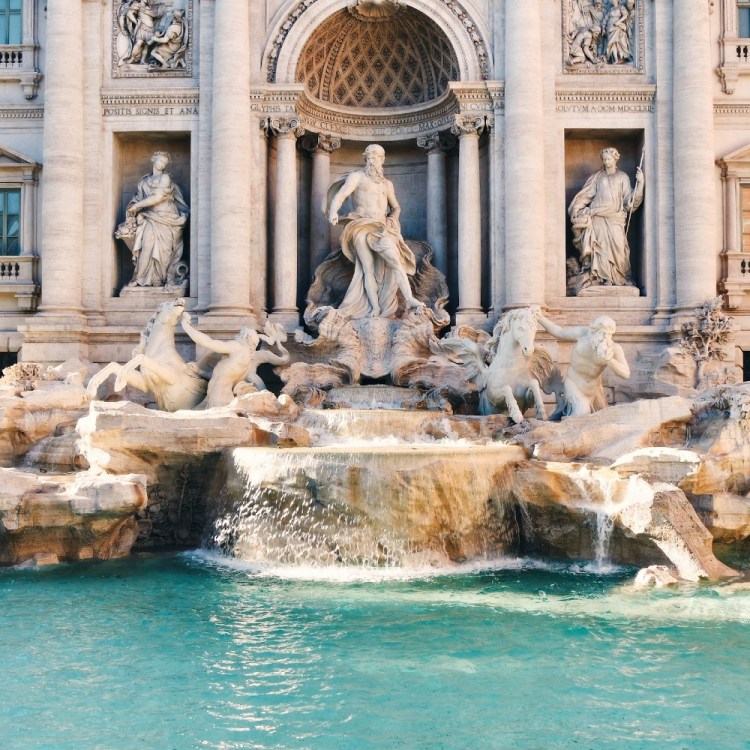Meandering through the short tundra brush, the polar bear comes to us slowly. Once close, it sizes us up, wondering if we can be of use — perhaps as a snack on this crispy arctic midmorning. Luckily, it can’t get us. We are standing on an elevated platform of our Tundra Rover, a vehicle equipped with massive wheels designed to seamlessly traverse the uneven frozen terrain of Canada’s far north. The bear looks up at us for a few minutes, circles about and starts to sashay away. Then it pauses, looks around, sniffs the air and suddenly breaks into a run. We gasp in surprise — not many things in this world can scare a polar bear. “What is it running from?” we ask our guide, Rachel Sullivan-Lord. “It must’ve seen or smelled another bear — likely a bigger one,” she guesses. Within a few minutes she’s proven right. We spot another ivory hulk, bobbing up and down among the rocks in the distance.
Our driver throws the rover into gear, and we slowly roll after the furry fugitive, curious what it’s doing. For a few minutes our quarry hauls along, periodically glancing back, until it’s finally satisfied with its distance from the other bear. Tired from the sprint, it crawls onto a big rock, curls up and takes a nap right in front of us, as if deliberately posing for pictures, which we snap readily. The time’s approaching noon and we’ve already photographed several such majestic creatures. Just another day in polar bear country, on an arctic safari.
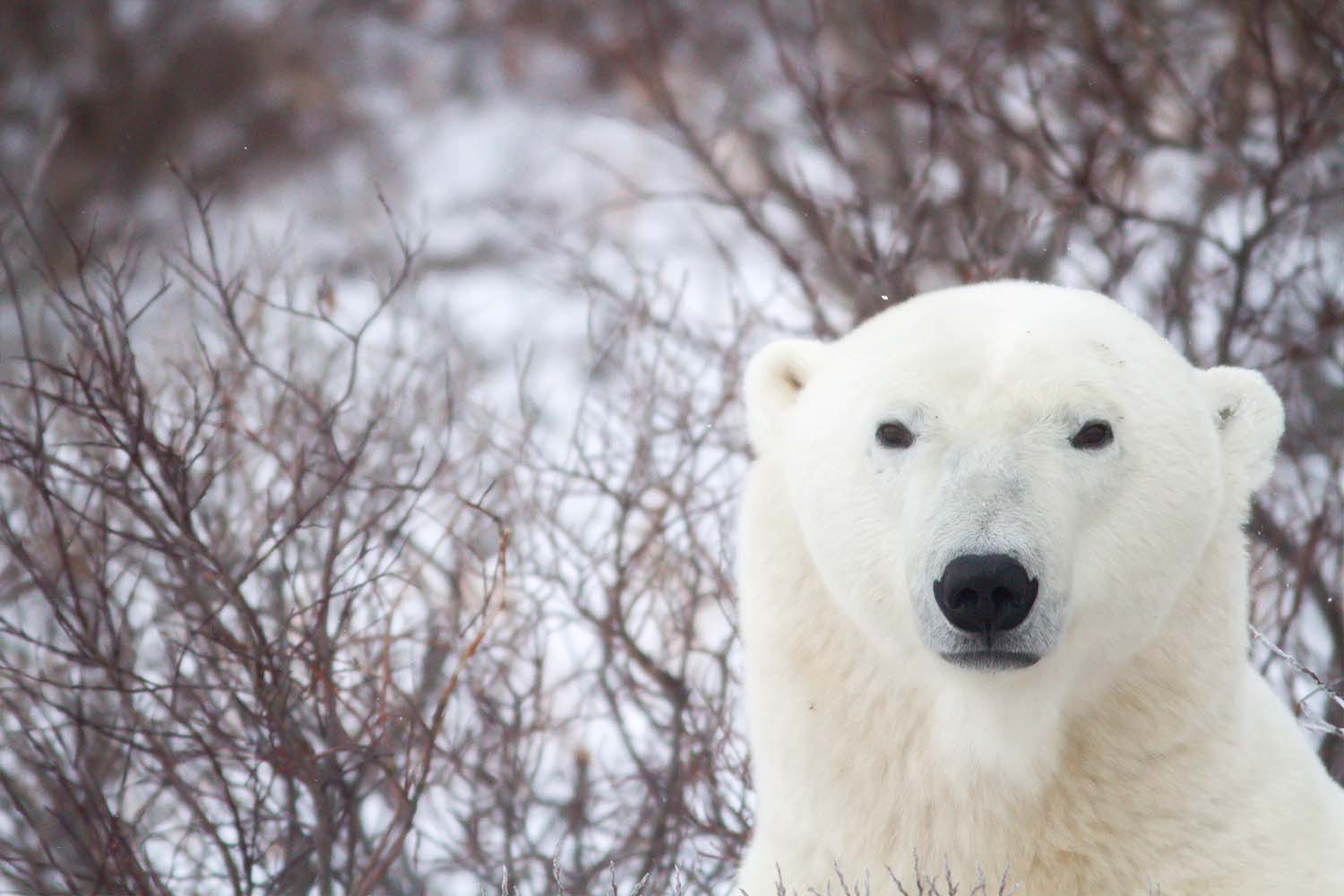
Located on the shores of Hudson Bay, near the tiny town of Churchill in Canada’s Manitoba province, this area is a favorite polar bear hangout, particularly in late fall. About 850 bears — as many as there are people in Churchill — gather up here waiting for the bay to freeze. That makes this cold and remote part of Canada a unique place to see the Kings of the Arctic in their natural habitat. That’s what I am doing here with Natural Habitat Adventures, an eco-conscious expeditions tour operator that brings small groups into some of the most unique wildlife sightseeing spots on the planet — up close and personal with the animals but without interference. (Even as we followed the little bear, we kept our distance!)
Dubbed Canada’s Premier Polar Bear Adventure, it began with a journey to Churchill, a town so remote, it’s reachable only by planes with no roads leading to it. To prep for our Arctic Safari, we first gathered in Winnipeg, Manitoba’s capital and one of the five coldest cities in the world. On our first night in Winnipeg’s historic Fort Garry Hotel, our NatHab guides equipped us with parkas and boots. Next morning, wrapped up in our tundra gear, we boarded a charter plane to Churchill. About two hours later, we landed, greeted by an icy blow of Arctic wind, as we stepped out of the plane. Shortly after, we were on our way sleuthing for polar bears in our Tundra Rovers.
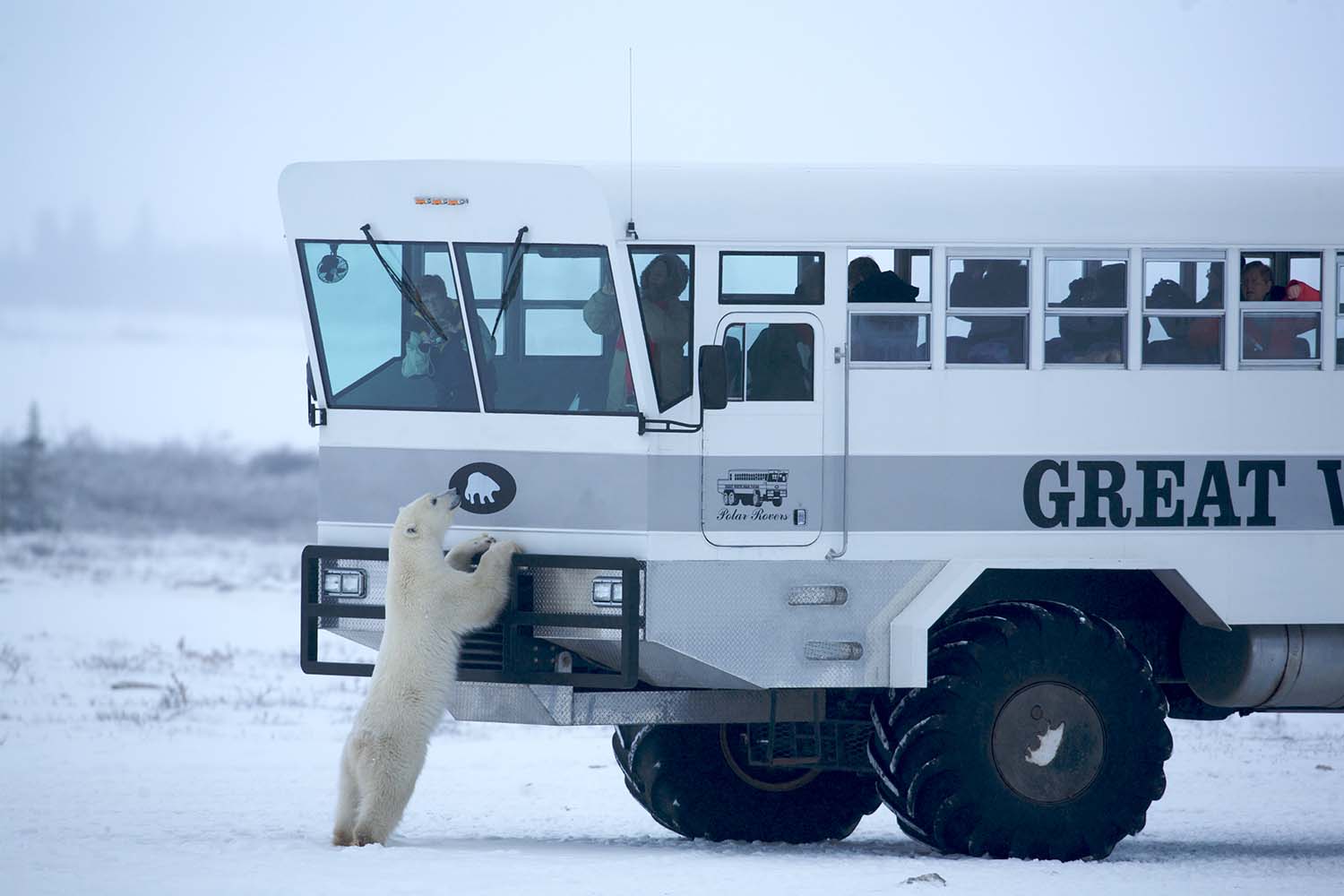
The best time to see the bears is October-November as they wait for the ice to form on the Hudson Bay. As soon as it freezes, they head out to hunt seals, their favorite prey, through the ice holes. When the ice melts again in July, they come back to land where food sources are scarce. By November, the creatures are starving. They are so hungry that some may even hunt their own kind — in fact males sometimes kill the cubs if they find them separated from their moms. Although some are more peaceful — we had seen two humongous hulks sleeping next to each other in the bushes — the smaller bear that fell asleep in front of us was smart to dash away.
After having lunch in our rover seats with the sleeping bear view (a roasted red pepper soup and brie cheese wraps — tundra gourmet!), we plow ahead looking for more wildlife. We spot an arctic hare, snow-white and winter-ready, huddling in the bush. We drive by a flock of fluffy ptarmigans, little tundra birds that also change color for winter. A little later, we snap pictures of an equally white Arctic fox, on a prowl for either one of these creatures.
As the day winds down, we head back to our Tundra Lodge, best described as a cross between a hotel and a sleeper-train on massive wheels so we can admire the bears safely from above. Although reminiscent of a train, this custom-designed lodge doesn’t travel, but is positioned right where the bears like to roam. Its huge wheels assure that its height matches that of our Tundra Rover so that the vehicle can dock at its back. The lodge, with its small cozy compartments that feature comfy bunk beds, a lounge and a restaurant car, is our home for the three days.
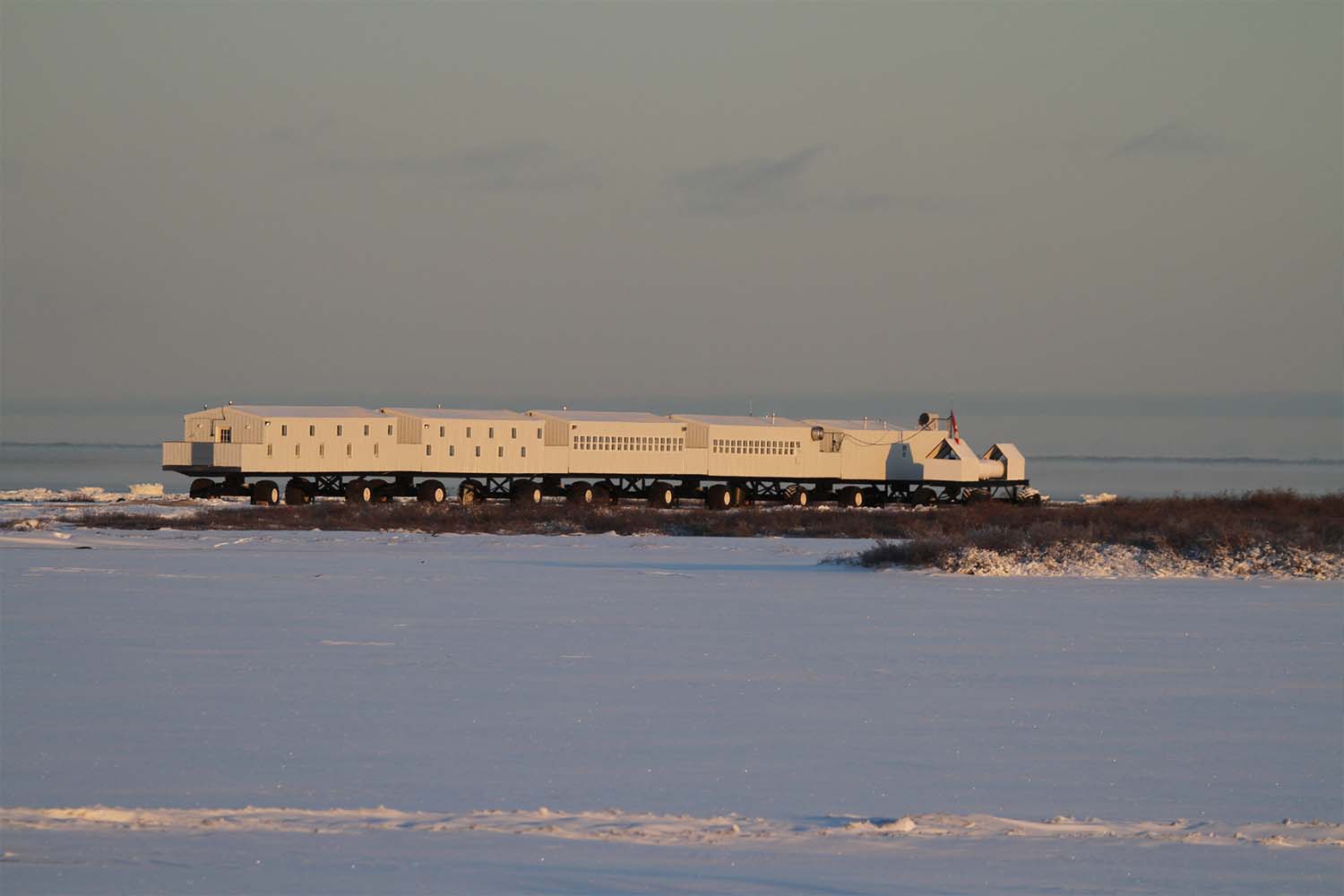
We wait for our rover to dock at the back of the Tundra Lodge so we can safely head to our rooms, without setting foot onto the dangerous grounds below where bears can get us. “Despite their size, they are stealthy and sneaky, and very good at hiding,” Sullivan-Lord tells us. “You don’t want to be surprised by one.”
She’s proved right once again. As we approach the lodge, a bear walks out from behind one of its huge wheels and strides toward our rover. “This one is a female who isn’t pregnant or having cubs this season,” says Sullivan-Lord, who can tell its gender by the shape of its head. We get another exciting lesson in bear biology and behavior. A female can mate with two or three males the same season and have cubs from all of them, during the same pregnancy, at the same time. Her fertilized eggs can float inside her uterus for weeks. If she has enough fat stores to give birth and nurse the cubs, these eggs attach to her uterine walls in the fall — a phenomenon called delayed implantation. The future mom finds a den in which she gets snowed in, safely cutoff from the dangers of the world. Around December she gives birth to the tiny cubs, each weighing a little over a pound. “That’s how we know she isn’t pregnant,” Sullivan Lord says of the lady bear crossing our path. “Otherwise, she’d be huddling in her den.”
Chasing Fresh Powder and True Adventure Above the Arctic Circle
Everything you need to know about backcountry skiing in NorwayAs she says it, the lady bear starts acting strange. She waddles off, but in a weird way — butt first. “What is she doing?” we wonder aloud, but before our guide has a chance to speak, we get the answer. The bear semi-squats depositing a brown-black pile of poo, leaving us ecstatic at the spectacle and photographing the evidence. Sullivan-Lord informs us that we just witnessed an incredibly rare thing. “Because bears are starving, they normally don’t have anything to poop with,” she explains — but this one must’ve found something to eat. “Someone told me they saw a bear munching on a beluga carcass on the shore a few days ago. Maybe that was her.” That’s a good sign, she adds. Polar bears don’t normally hunt belugas, but as their fasting periods are getting longer — the ice melts earlier and forms later due to warmer weather — they may be trying new foods. “Hungry bears get resourceful.”
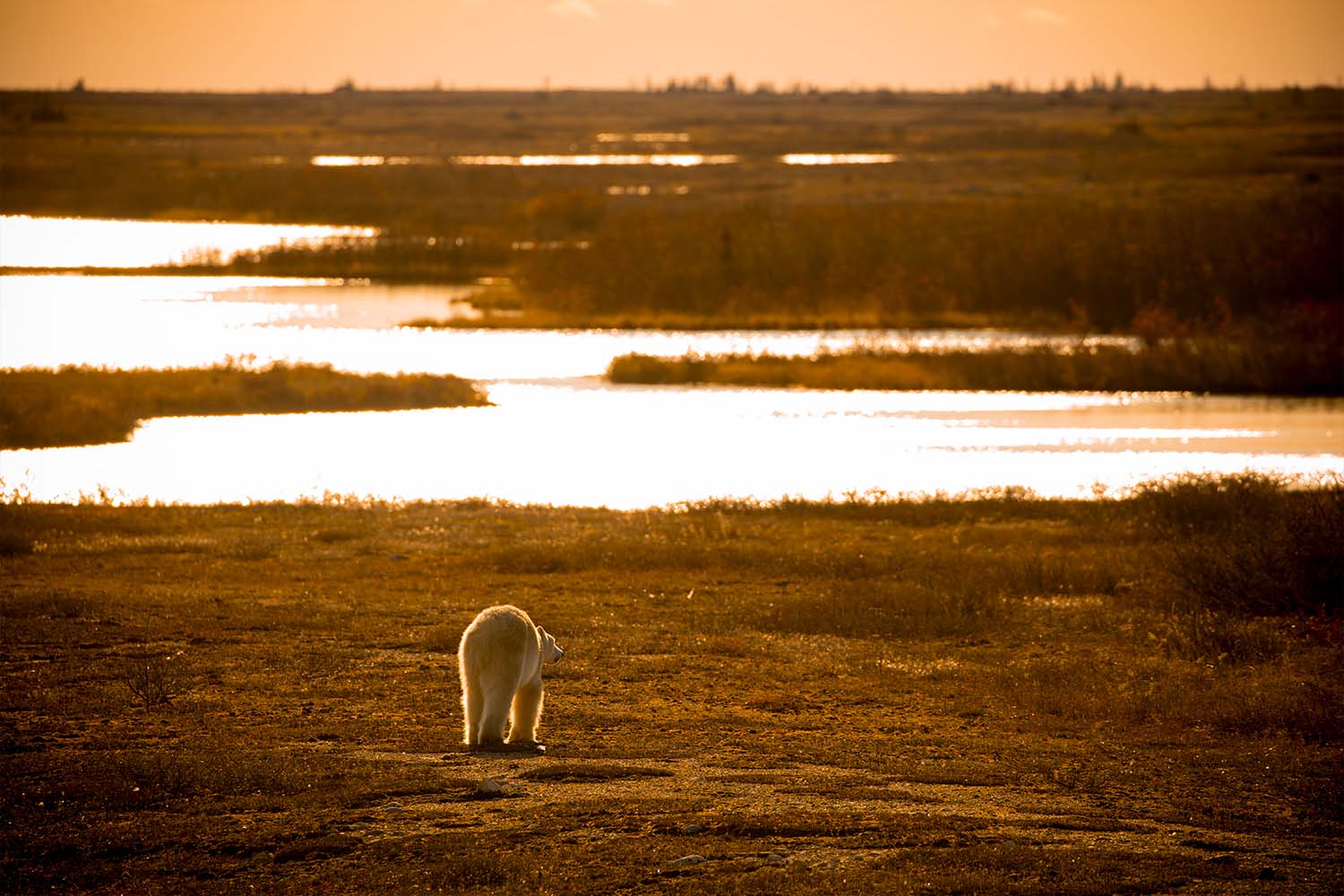
We are hungry too, so when our rover docks, we proceed to the dining car. As we feast on the braised angus beef ribs and a warm apple cobbler, our other guide, Katrina Rosen, tells us how Churchill residents deal with ravenous animals that often wander into town trolling for food. Originally a frontier town for fur trading, it later became Fort Churchill — a military base where the US army, with Canada’s permission, tested various ballistic equipment in extreme cold. During those times, if bears got close to humans, they were shot. When the military left in the 1980s, that mentality began to change, influenced, at least in part, by wildlife tourism and people’s fascination with the Kings of the Arctic. Natural Habitat Adventures, the company that organizes the tours, wants us to not only admire the creatures, but create an incentive to keep bears alive, employing locals in the tourism business. Among other things, Churchillians never walk alone on the street, especially at night, and always check for fresh paw prints before heading out the door. “There’s a special bear patrol service, too,” Rosen tells us — a Polar Bear Alert Program and a Polar Bear Hotline, through which residents report bears sighted in or near town. Conservation officers arrive minutes after the call and drive the intruder away with firecrackers — and no harm done. “Churchill is really unique in how it coexists with these animals,” Rosen says.
As the evening ends, we climb into the bunk beds in our rooms, turn off the lights and stare up at the twinkling stars above. There’s no cell service here — and that’s a blessing for I have no emails to check or calls to return. I wrap myself into the soft, warm blankets and look out the window feeling like a kid in a camp — one on one with the endless wilderness. Tomorrow and the day after, the rovers will again pick us up in the morning to scout for more bears, hares, foxes and birds. With luck, we may even see some bears playfighting in the snow or standing up on hind legs at our vehicles, looking straight at us. Smart, resourceful and good hunters, I hope they can persevere through the changing climate and the vanishing ice, finding sufficient alternative food sources to produce enough offspring so that generations of tourists can experience the same thrill and wonder I did on my arctic safari. Perhaps someone else in the future might snap a similar picture of the polar bear poop I took today — now saved on my phone forever.
This article appeared in an InsideHook newsletter. Sign up for free to get more on travel, wellness, style, drinking, and culture.
